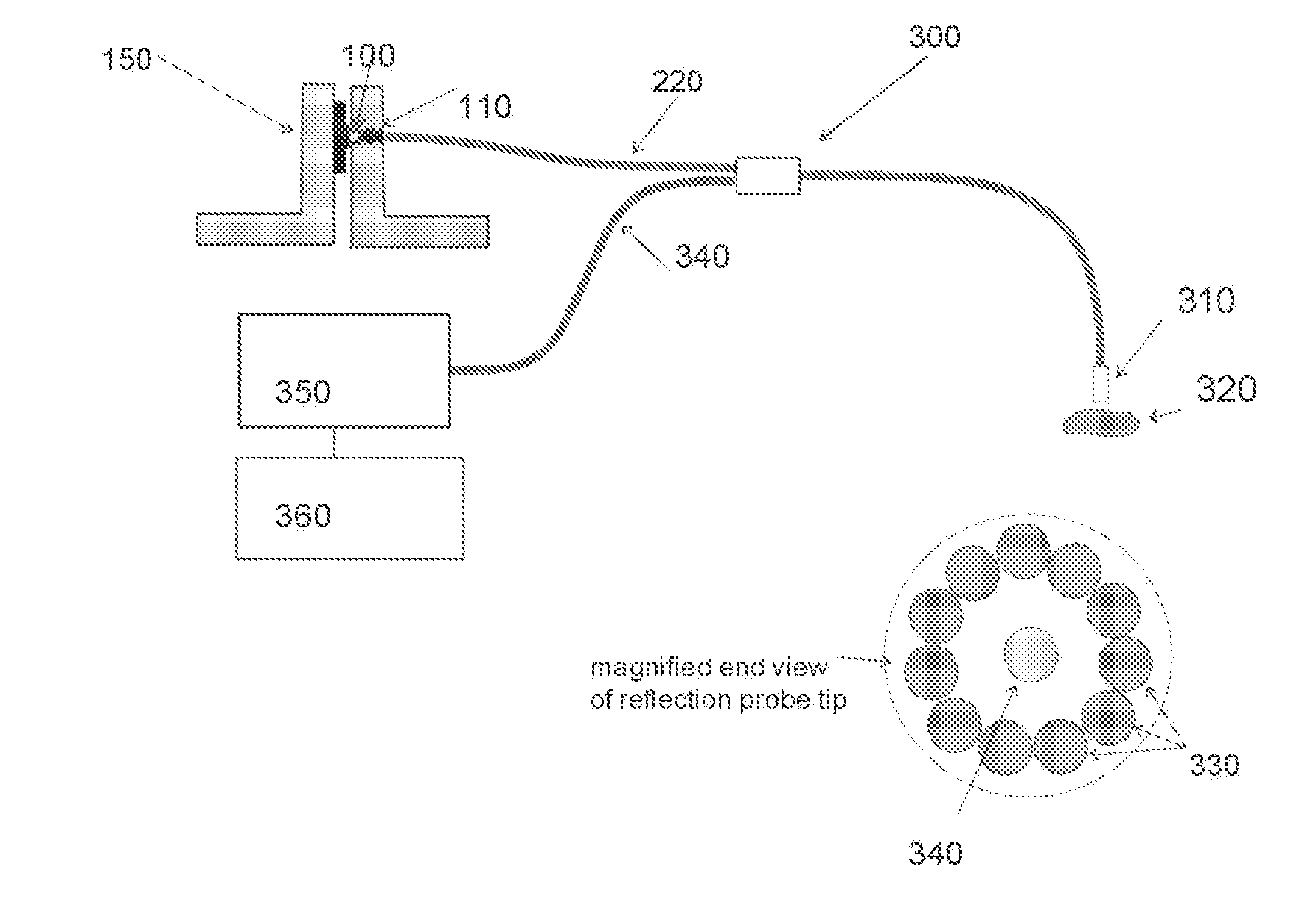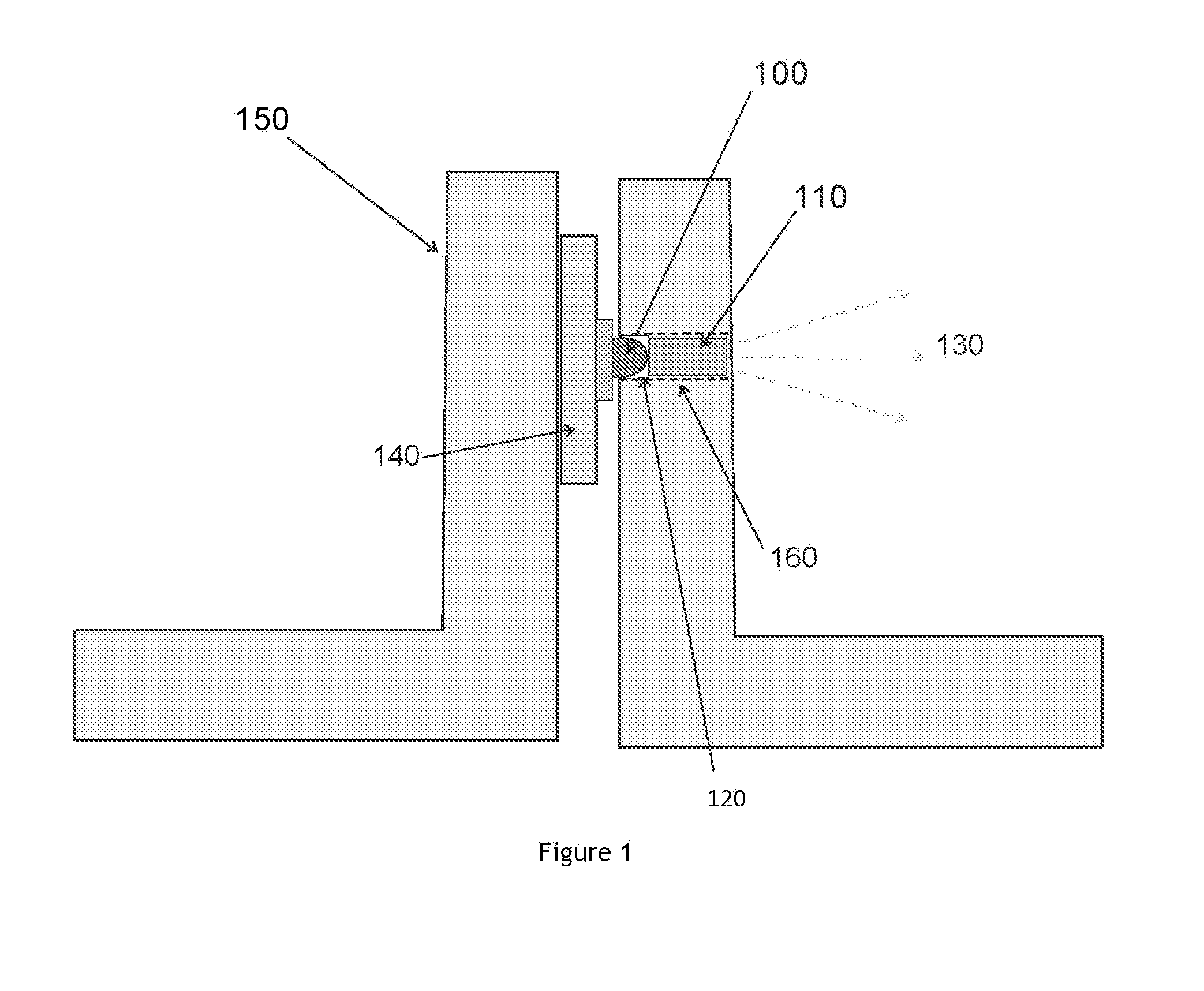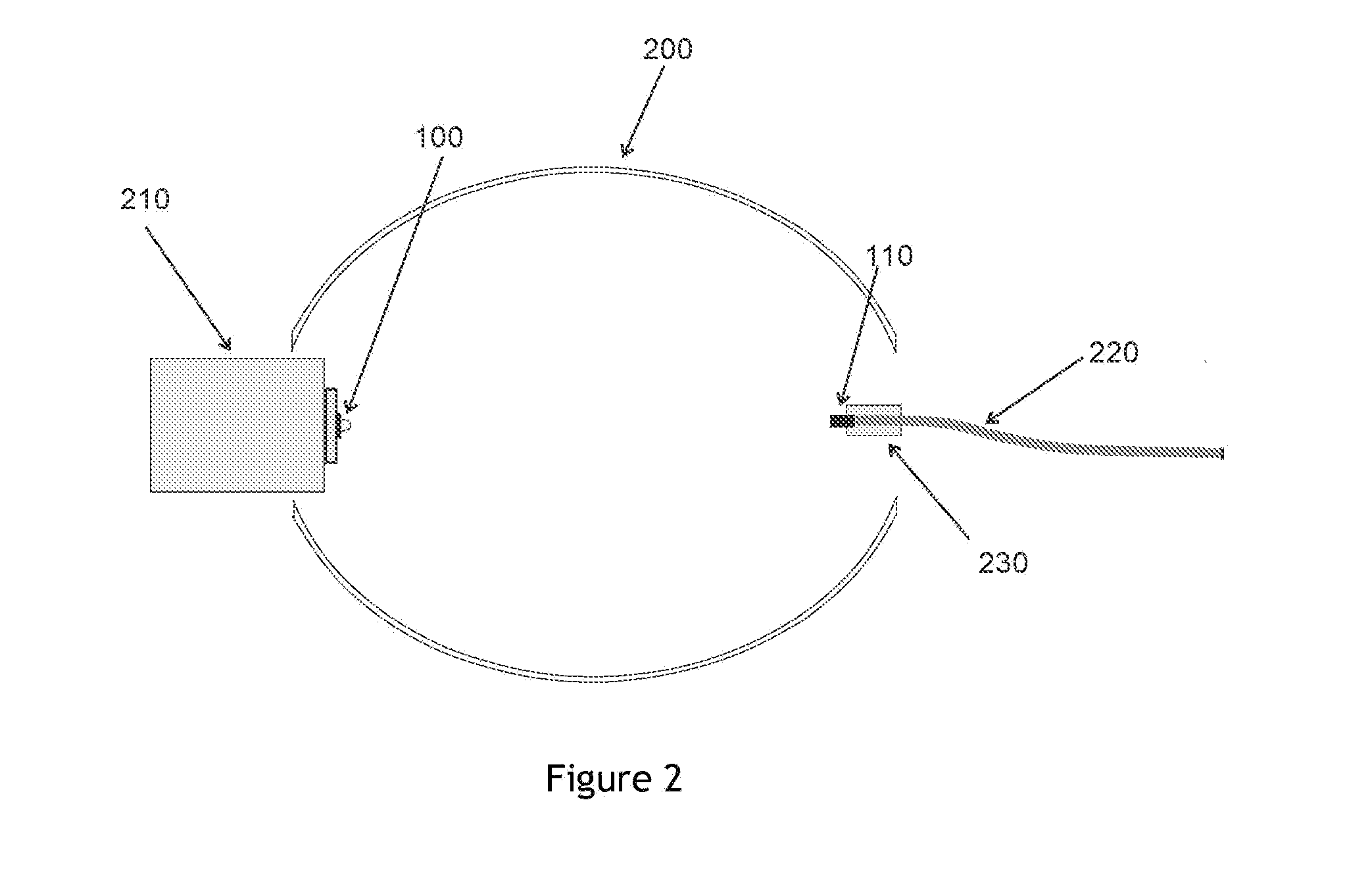Solid State Broad Band Near-Infrared Light Source
a near-infrared and solid-state technology, applied in the field of light sources, can solve the problems of high material price, difficult to meet the needs difficult to meet the requirements of other broad-band solid-state light sources, etc., and achieve excellent potential and high quantum efficiency
- Summary
- Abstract
- Description
- Claims
- Application Information
AI Technical Summary
Benefits of technology
Problems solved by technology
Method used
Image
Examples
Embodiment Construction
[0037]In the following detailed description, reference is made to the accompanying drawings which form a part hereof, and in which are shown, by way of illustration, specific embodiments in which the invention may be practiced. It is to be understood that other embodiments may be used, and structural changes may be made without departing from the scope of the present invention.
[0038]Reflection Spectral Measurements
[0039]A design of the Ti-Sapphire based light source, as shown in FIG. 1, includes an excitation light source consisting of high power (0.2-1.0 Watt) blue or blue-green LED 100 with a center wavelength between 560 to 490 nm, with a molded-in plastic lens positioned against Ti+3 doped sapphire laser rod 110, with small air space 120 between the LED lens and the Ti-Sapphire rod due to curvature of the lens. Optionally, the air space between the LED lens and the Ti-Sapphire rod may be filled with a clear optical encapsulant such as an optical epoxy or optical grade silicone e...
PUM
 Login to View More
Login to View More Abstract
Description
Claims
Application Information
 Login to View More
Login to View More - R&D
- Intellectual Property
- Life Sciences
- Materials
- Tech Scout
- Unparalleled Data Quality
- Higher Quality Content
- 60% Fewer Hallucinations
Browse by: Latest US Patents, China's latest patents, Technical Efficacy Thesaurus, Application Domain, Technology Topic, Popular Technical Reports.
© 2025 PatSnap. All rights reserved.Legal|Privacy policy|Modern Slavery Act Transparency Statement|Sitemap|About US| Contact US: help@patsnap.com



